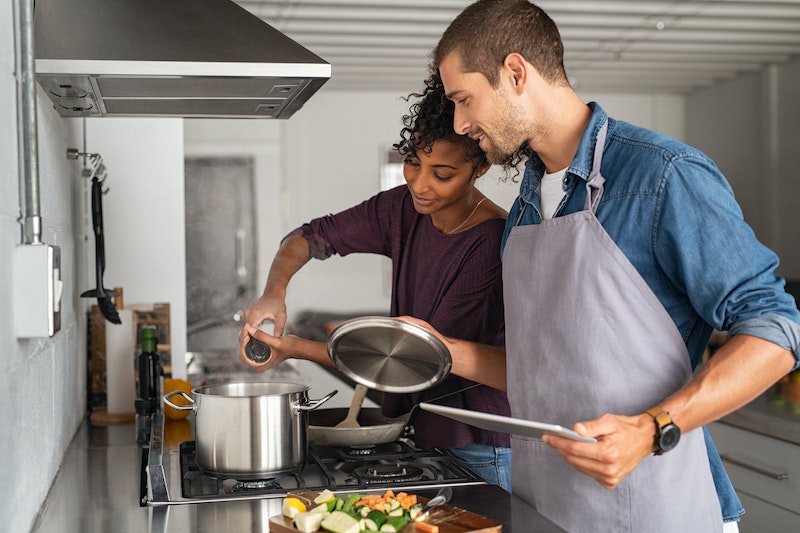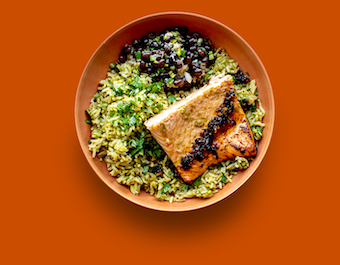Why it’s good to cook at home
These days, it can seem like a home-cooked meal is a luxury. Our lives often feel too hectic to enjoy proper sit-down meals at the dinner table every night, and the convenience of restaurants, prepared-food counters, and fast-food drive-thrus can be hard to resist. But cooking at home doesn’t have to take a lot of time or effort, and the payoffs are huge.
Meals from restaurants and fast-food joints usually have more calories than home-cooked versions, and often include more of all the bad stuff you should be avoiding, like saturated fats, salt, and sugar.
Home-cooked meals, on the other hand, tend to be cheaper and lower in calories. Home cooks also tend to go easier on the fat, sugar, and carbohydrates than restaurant chefs. Plus, you get to be in charge — you can use exactly what you like, whether it’s organic butter or heirloom yellow tomatoes. This might sound like small potatoes, but it’s not: Eating out often, especially at fast-food joints, may lead to a health problems from weight gain to diabetes to heart disease.
Family meals
Eating at home is not just good for your weight and your wallet. Families who eat together tend to be closer because they talk at the dinner table. Studies show that kids who regularly eat at home are less likely to be overweight and may even do better in school. And unlike when kids are out with friends, when the whole family eats at home it’s easier to keep a handle on portion sizes, sugary drinks, deep-fried foods, and desserts.
Time-saving tips
It’s true that prepping meals at home takes a little time and work, but probably not as much as you think. Many cookbooks and online recipes are written with busy lives in mind, and often include the total prep and cook time, so you can plan ahead. It’s actually pretty easy to make a tasty meal in under 30 minutes — which, if you think about it, is about as long as it takes to order takeout or drive to a restaurant and have a meal.
There are lots of ways to save time when you’re cooking:
- Have some go-to dishes. Learn a few simple recipes and write up a shopping list for the week. That way you’re not always wondering what to cook, and you’ll have the basics on hand.
- Keep a stash. Always stock up on staples like dried pasta, canned beans, and frozen veggies. You can also freeze pesto and scoop out a spoonful when you need it.
- Outsource some of the prep. Most grocery stores now carry bags of washed salad greens, chopped and peeled veggies, pre-cooked pizza dough, and tons of other handy items that take a lot of the work — and time — out of cooking. All you have to do is toss it together and heat it up.
- Make a bigger batch. One-pot meals like chili are easy to scale up, and they freeze and reheat well. They’re also a good way to get loads of veggies and beans.
- Make ahead. Find ways to cook components for more than one meal at a time. For example, you might roast two chickens and use the second one the next day for tacos. Over the weekend, you can make several meals for the week ahead.
- Have a party. Make meals more fun by inviting friends over for a potluck or cooking party, where everyone gets to enjoy the food — and the company.
- Get some gadgets. Consider investing in a slow cooker, so your food will be hot and ready for you when you walk in the door at the end of the day. If you love beans, a pressure cooker cuts down a huge amount of cooking time. A stick blender might be great for blending soups in the pot. Before you buy a big item, try to borrow one from a friend and see if it really works for you.
Cooking is is fun, relaxing, and good for you. Dust off those pots and pans and treat yourself to a wonderful meal. Rally has loads of great recipes to help you get started.
Selected references
United States Department of Agriculture. Cook More Often at Home. ChooseMyPlate.org
Harvard School of Public Health. Food and Diet. Obesity Prevention Source, Harvard School of Public Health website.





